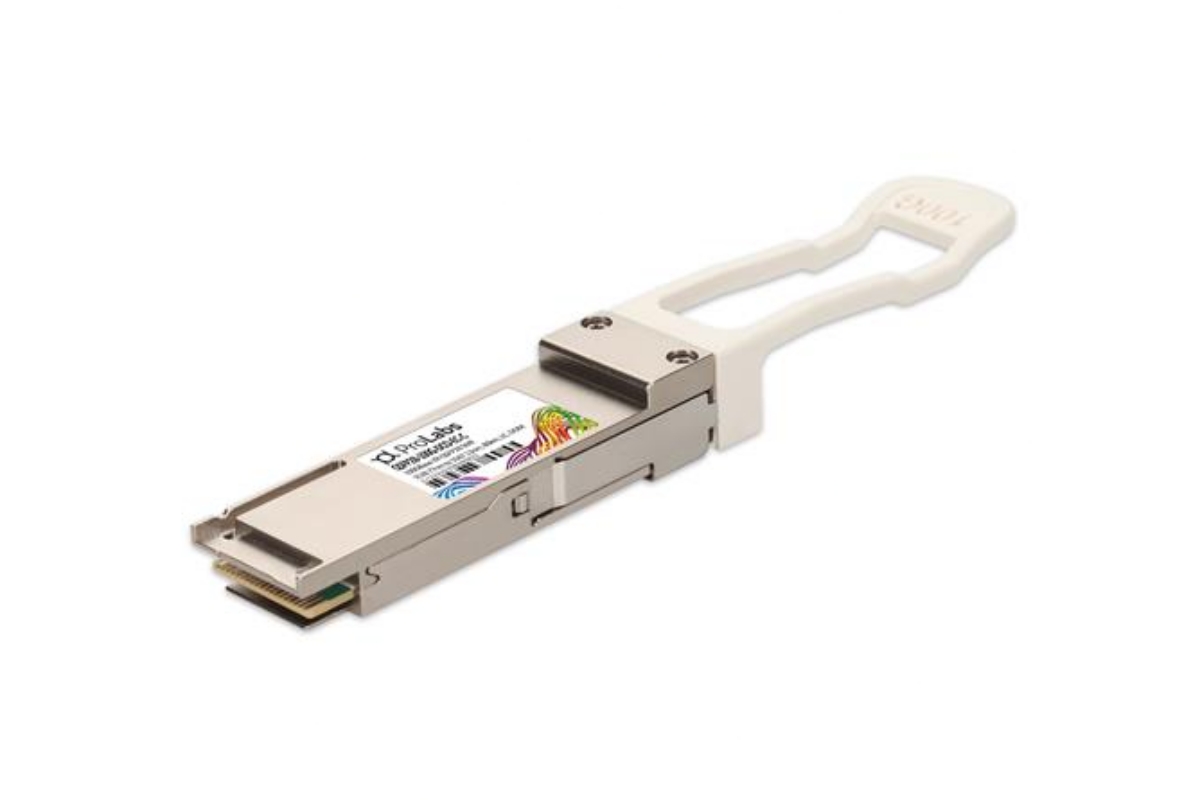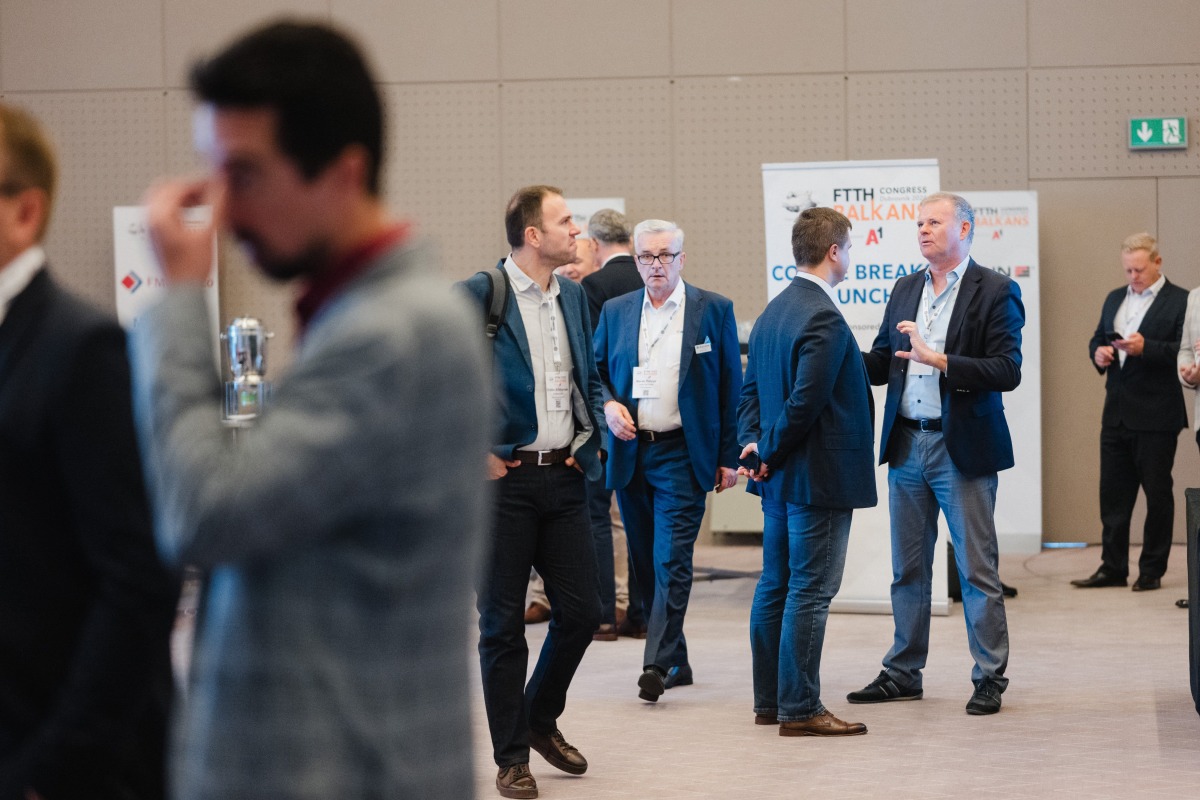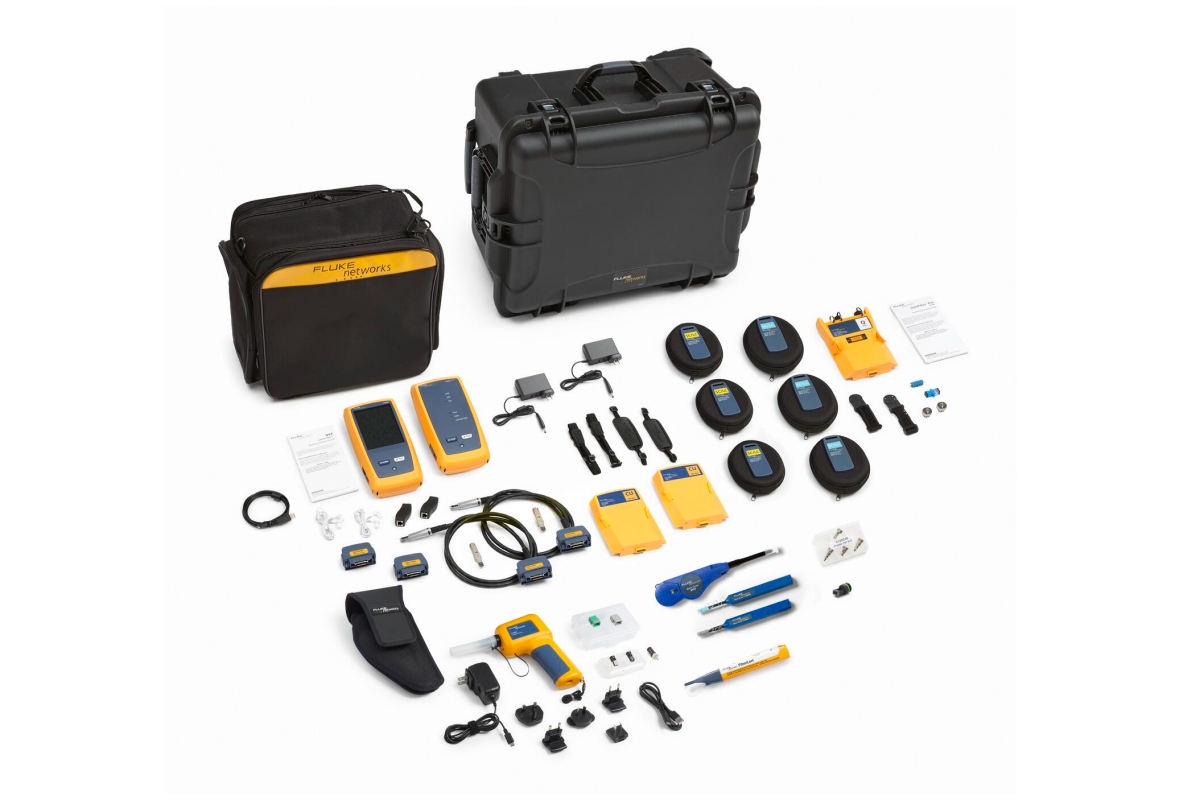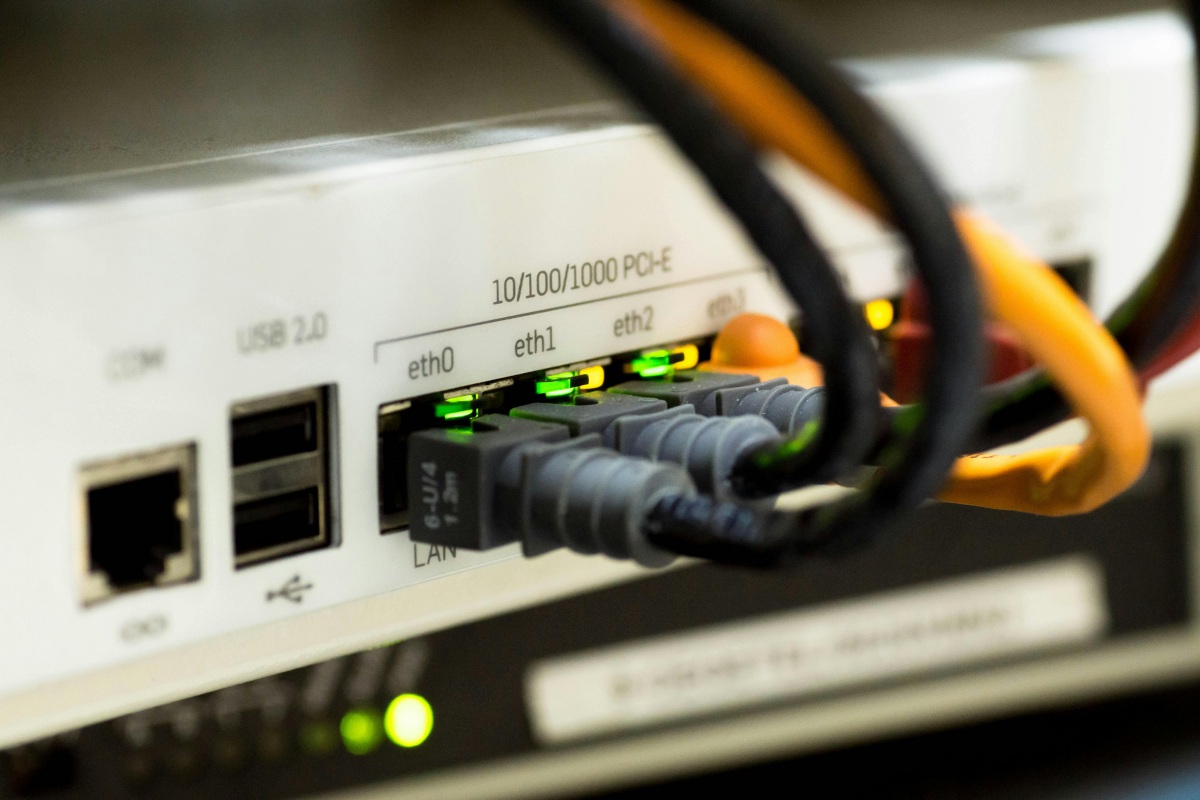Enterprise Network Infrastructure: Design, Performance & Security
Cyber Security Insights for Resilient Digital Defence
Data Centre Infrastructure News & Trends
Data Centre Security: Protecting Infrastructure from Physical and Cyber Threats
Enterprise Network Infrastructure: Design, Performance & Security
Macquarie, Netskope partner on network security in Australia
Macquarie Telecom, an Australian provider of data centres, cloud services, cybersecurity, and telecommunications, part of Macquarie Technology Group, has announced a partnership with Netskope to simplify how Australian organisations secure and manage data, cloud, and AI applications.
The collaboration combines Netskope’s Security Service Edge (SSE) platform with Macquarie Telecom’s software-defined wide area network (SD-WAN). Together, these form a Secure Access Service Edge (SASE) framework, offering integrated networking and security functions for organisations adopting cloud services and AI.
Addressing cybersecurity pressures
Australian businesses have faced repeated data breaches in recent years, prompting tighter cybersecurity regulation and greater demands on IT teams.
The partnership aims to provide unified security and network management, helping organisations protect users and data across different environments.
Netskope’s platform consolidates web, data, cloud, and AI security into a single system, designed to reduce costs and balance protection with performance. It is IRAP-assessed at the PROTECTED level for use within Australian Government departments and critical industries.
The combined service also supports compliance with the Security of Critical Infrastructure (SOCI) Act and the Essential Eight framework.
Luke Clifton, Group Executive for Macquarie Telecom, says, “Organisations big and small are under immense pressure to strengthen their cyber defences while keeping operations simple and manageable.
"By joining forces with Netskope, we’re giving customers a smarter, more resilient network backed by integrated, enterprise-grade security. They’re getting the best of both worlds.”
Tony Burnside, Senior Vice President and Head of APAC at Netskope, adds, “Modern networks need to be both fast and secure, but many organisations are still having to accept trade-offs between performance and security.
"Networking and security consolidation is now a cornerstone of the demands of modern business, and through this partnership with Macquarie Telecom, we will help more Australian organisations unlock enhanced levels of data security.”
Netskope already works with Macquarie Government, Macquarie Telecom’s sister company, to deliver SASE technology to federal government customers. The new partnership expands that collaboration into the wider business sector.
For more from Macquarie Telecom, click here.
Joe Peck - 1 October 2025
Data Centre Business News and Industry Trends
Data Centre Infrastructure News & Trends
Enterprise Network Infrastructure: Design, Performance & Security
Insights into Data Centre Investment & Market Growth
Turkish interconnection market projected to double by 2030
According to a new study by DStream Group, commissioned by internet exchange (IX) operator DE-CIX, Istanbul is emerging as a global digital hub and a key interconnection point for data traffic between Europe, the Middle East, and Central Asia.
The findings were published to mark the tenth anniversary of DE-CIX Istanbul, Turkey’s largest neutral internet exchange.
Over the past decade, the country has moved from a fragmented digital landscape to one of regional integration and growing global importance.
Istanbul’s role as a digital hub
The study highlights that Turkey has made notable progress in digital infrastructure, with Istanbul at the forefront. A combination of location, an expanding internet exchange market, and rising demand for data services has strengthened the city’s role in regional connectivity.
Istanbul’s data centre market is also expanding, supported by demand for cloud services, digital transformation, content delivery, and wider internet penetration. The report forecasts that the city’s interconnection market will exceed 150 networks and carry multi-terabit-per-second traffic by 2030, nearly double today’s levels.
Turkey’s position as a land bridge between Europe and Asia offers additional resilience for international connectivity. Nationwide fibre coverage and submarine cable systems landing in the country link directly with more than 20 neighbours, creating alternative routes for data flows.
Land-based connections also provide redundancy to European submarine routes, strengthening reliability.
Other cities, including Ankara, Izmir, and Van, are also emerging as infrastructure hubs, contributing to a more distributed national network.
DE-CIX Istanbul’s role
Established in 2015, DE-CIX Istanbul is the country’s first and largest neutral internet exchange, enabling low-latency data exchange between more than 60 networks. The exchange now operates across over ten colocation sites in the city, providing geographic redundancy.
According to DE-CIX, 93% of international networks in Istanbul peer through its platform. This has attracted global operators, encouraged development of land-based routes, and most recently supported the launch of an AWS cloud onramp in the city.
Bülent Sen, Regional Director of DE-CIX Türkiye, says, “Turkey is no longer just a gateway; it’s becoming a destination for digital investment. We are already seeing massive growth at the exchange.
"In early August, the IX surpassed 500 Gbit/s of throughput for the first time, and in September 2025, peak traffic exceeded 533 Gbit/s - up 42% since the start of the year. We expect this trend to continue, driven by the adoption of artificial intelligence, which many businesses now rank as a top investment priority.”
Looking to the next decade, DE-CIX predicts that AI and satellite internet will reshape demand for connectivity.
Ivo Ivanov, CEO of DE-CIX, adds, “With a commitment to neutrality, DE-CIX Istanbul is poised to anchor regional data flows and support the digital future of the whole region.
"AI and satellite-based internet will significantly reshape the connectivity landscape in the coming decade. Turkey is well-placed to play a major role in this transformation.”
The study suggests Turkey should focus on attracting hyperscale cloud providers, increasing CDN deployments, and broadening its interconnection ecosystem.
It also recommends regulatory reform, greater infrastructure liberalisation, and stronger public-private partnerships to support the country’s digital economy.
For more from DE-CIX, click here.
Joe Peck - 1 October 2025
Data Centre Infrastructure News & Trends
Enterprise Network Infrastructure: Design, Performance & Security
Exclusive
Future-proofing network infrastructure
In this exclusive article for DCNN, Warren Aw, Chief Commercial Officer at Epsilon Telecommunications, highlights why agile, high-capacity connectivity is the critical ingredient for resilience in an era of relentless digital demand:
Colocation, connectivity, and continuity
In today’s digital landscape, business IT environments are becoming increasingly sophisticated and, with that, more complex. Whether it’s an enterprise working to stay ahead of increasingly digitally savvy consumers, or a service provider keeping those enterprise services and workloads up and running, network downtime is no longer an option.
Downtime is more than just an inconvenience; it’s a major threat to revenue and reputation. For 90% of mid-to-large-sized enterprises, just one hour offline can cost more than $300,000 (ITIC) (£221,000). Despite this, many businesses are still relying on infrastructure that wasn’t built for the scale, speed, or strain of today’s digital demands.
Whether the services are mission-critical or not, a bad online experience can make or break customer relationships in an instant. Customers now expect always-on availability for a wide range of services, such as streaming video content, collaborating in the workplace, performing financial transactions, or accessing cloud services. Business continuity was once a contingency plan, but it has now become a competitive advantage.
That being said, ensuring continuity is also becoming more difficult due to growing data volumes, AI workloads, rising user expectations, and a more distributed business application ecosystem. This, coupled with real-world constraints like power limitations, infrastructure strain, and inconsistent SLAs, is making it more important than ever for businesses to re-evaluate their network and business continuity strategies to stay resilient, particularly if legacy infrastructure is still in play.
Colocation, when combined with agile, high-capacity connectivity, can provide a simpler, smarter way for businesses to keep service access and delivery both online and ahead in a competitive market. Colocation really is more than just racks and servers; it’s an opportunity to future-proof network infrastructure with adaptability, scalability, and reliability at the core.
Legacy infrastructure limitations
As businesses deploy more data-intensive applications, compact edge computing devices, and AI workloads, rising demands are putting increased strain on legacy infrastructure and on-premises environments. This includes:
• Power constraints – Modern applications require newer, high-density equipment, which significantly increases power requirements.• Downtime risks – Legacy infrastructure and single points of failure raise the likelihood of outages, damaging SLAs, revenue, and brand reputation.• Business continuity gaps – Without resilient infrastructure and built-in redundancy, organisations face growing challenges in maintaining always-on availability.• Scalability challenges – On-premises infrastructure can be slow and expensive to scale in response to customer demands or new market opportunities.• High costs – Cooling, power, staffing, and maintenance are stretching budgets and internal team resources.• Inter-provider complexity – Managing connectivity across multiple clouds, partners, and carriers is complex, time-consuming, and prone to performance issues without the right interconnect fabric.
These limitations are pushing IT leaders to look for modern, flexible infrastructure strategies that can grow with their business.
Colocation for business continuity
Colocation is more than just renting space in a data centre; it’s a strategic way to strengthen business continuity while simplifying IT infrastructure. Instead of maintaining costly on-premises facilities, organisations can host critical infrastructure in purpose-built, third-party data centres.
This shift not only reduces capital expenditure, but also enables teams to focus on innovation rather than infrastructure. Colocation provides robust power, security, and carrier-neutral connectivity to a global network ecosystem designed to prioritise uptime, resilience, and reach.
One of the key advantages of colocation is dual-site access, which allows businesses to distribute their infrastructure across two geographically separate, interconnected facilities. This setup is vital for disaster recovery and redundancy planning. If one site experiences a disruption – whether due to a power failure, natural disaster, or hardware issue – traffic and workloads can seamlessly fail over to the second site, minimising downtime and ensuring uninterrupted service delivery.
Colocation also supports business continuity by offering high-speed, low-latency connectivity to clouds, carriers, and partners. On top of this, it offers physical security and environmental controls that exceed most in-house capabilities, as well as power and cooling infrastructure designed for high-density, mission-critical workloads.
Beyond continuity, it brings cost-efficiency, operational simplicity, and access to a broader ecosystem of services. Colocation enables enterprises and service providers to focus on delivering value, rather than managing infrastructure.
Mitigating risk, maximising uptime
With increasingly complex IT environments and 24/7 availability becoming the new norm, having the right infrastructure in place is crucial. Colocation offers a practical, scalable way to support business continuity, reduce risk, and stay flexible in a changing landscape.
Epsilon offers colocation services across key hubs in London, Singapore, New York, and South Korea. Each facility provides 99.999% uptime and robust power backup, as well as direct access to our global network fabric of over 500 data centres, clouds, and internet exchanges via our NaaS platform, Infiny.
By future-proofing network infrastructure, colocation can maximise uptime, improve customer experiences, and build new competitive advantages that can support long-term business goals.
Ultimately, colocation provides the stable foundation that organisations need to safeguard operations in an unpredictable world. Business continuity is no longer a backup plan; it’s a competitive differentiator.
For more from Epsilon, click here.
Joe Peck - 30 September 2025
Data Centre Infrastructure News & Trends
Enterprise Network Infrastructure: Design, Performance & Security
News
STL showcases multi-core fibre at Connected Britain
STL, an optical and digital systems company, has demonstrated its Unitube Single Jacket Indoor Optical Fibre Cable with four-core multi-core fibre (MCF) at Connected Britain 2025.
The technology places four cores within the same cladding diameter as standard single-mode fibre, maintaining a coating size of 250/200 micrometres.
STL is among the first companies to show real-world deployments of MCF technology, with use cases spanning underground and duct networks. Building on this work, the new cable has been designed specifically for indoor environments such as data centres, campus networks, and commercial buildings.
Fire safety and performance features
The cable is certified under the Construction Products Regulation (CPR) EuroClass Cca-s2, d1, a1 standard, providing a high level of fire resistance for critical infrastructure.
STL has also developed optical distribution units and connectivity solutions to complement the product, aiming to simplify integration into existing network architectures.
Key features of the indoor cable include:
• Enhanced security — support for quantum key distribution (QKD) to enable tamper-evident encryption• Future-ready bandwidth — four times the throughput of legacy fibres, supporting applications such as AI, 5G, and quantum technologies• Compact design — higher fibre counts within a smaller footprint, with examples including 864 fibres scaled to 3,456 using MCF• Scalability — a single deployment providing higher backbone capacity for long-term use
Dr Badri Gomatam, CTO at STL, comments, “Through continuous innovation and global partnerships, STL is accelerating the adoption of advanced optical technologies.
"Our Unitube Single Jacket Indoor Optical Fibre Cable with MCF is engineered to meet the growing demands of high-capacity, secure, and future-ready networks.
"With our ongoing global standardisation efforts and real-world deployments, we are proud to lead the evolution of optical infrastructure that powers next-generation applications.”
Joe Peck - 29 September 2025
Data Centre Infrastructure News & Trends
Enterprise Network Infrastructure: Design, Performance & Security
Products
ProLabs expands 100G DCO transceiver range to 80km
ProLabs, a provider of optical connectivity and networking equipment, has launched an expanded QSFP28 100G digital coherent optics (DCO) transceiver family capable of extending network reach to 80 kilometres - up to twice the distance of typical transceivers.
The development comes as the UK, the world’s third-largest data centre market, faces increasing demand from AI and other emerging technologies.
By using ProLabs’ 100G DCO transceivers, the company says operators can connect data centres over longer distances without the need for repeaters, reducing infrastructure costs and freeing up resources for other areas of the network.
Reducing equipment and energy demand
According to ProLabs, the new range reduces reliance on intermediate points of presence (PoPs) and reconfigurable optical add-drop multiplexers (ROADMs), cutting the amount of equipment required.
Sam Walker, Vice President of Sales EMEAI at ProLabs, comments, “We are delighted to have launched our expanded range of DCO transceivers complementing our existing 400G ZR+ ahead of Connected Britain.
"Our transceivers will enable operators to improve their networks, reducing the number of active elements within the optical path. Not only does this reduce avoidable overheads, but it also helps address the growing demand for high-capacity, low-latency connectivity.”
The range is available in two variants: a standard power version for -10 dBm requirements and a high-transmit version for specific applications.
Options include ITEMP, ITEMP AutoTune, and CTEMP AutoTune, with a CMIS version due to be launched shortly. These features allow operators to automatically select the required wavelength once installed, aiming to support faster and more flexible integration.
Sam continues, “Another issue facing operators is power consumption. AI data centres require far more processing power than traditional facilities, and energy is costly.
"However, less network infrastructure means less power is required, so the use of our 100G DCO transceivers means operators can free up essential resources that may have been tied to power consumption.”
The ProLabs family of 100G DCO transceivers will be available for the first time at Connected Britain in London (24-25 September) at Stand 258.
For more from ProLabs, click here.
Joe Peck - 23 September 2025
Data Centre Business News and Industry Trends
Data Centre Infrastructure News & Trends
Enterprise Network Infrastructure: Design, Performance & Security
Insights into Data Centre Investment & Market Growth
Ciena to acquire Nubis Communications in $270m deal
Ciena, an American networking systems and software company, has announced an agreement to acquire Nubis Communications, a privately held company based in New Providence, New Jersey, USA, in an all-cash transaction valued at $270 million (£199 million).
Nubis specialises in high-performance, low-power optical and electrical interconnects designed to support artificial intelligence (AI) workloads. The acquisition is hoped to strengthen Ciena’s data centre strategy by adding new technologies and expanding its engineering expertise.
Expanding data centre interconnect capabilities
Nubis’ technology is focused on increasing scale and density inside the data centre to handle growing AI traffic. Its portfolio includes:
• Co-Packaged Optics (CPO) and Near Packaged Optics (NPO) — high-density optical modules capable of 6.4 Tb/s full-duplex bandwidth, optimised for low-latency, low-power operation. Combined with Ciena’s SerDes, these engines enable advanced interconnects for rack-to-rack and in-rack connectivity.
• Electrical Active Copper Cables (ACC) — analogue electronics that extend copper connectivity up to 4 metres at 200 Gb/s per lane, offering a low-power, low-latency alternative to traditional copper or DSP-based approaches.
In addition, more than 50 Nubis engineers will join Ciena’s research and development team, strengthening its technical capabilities inside the data centre.
David Rothenstein, Chief Strategy Officer at Ciena, says, “The acquisition of Nubis represents a significant step forward in Ciena’s strategy to address the rapidly growing demand for scalable, high-performance connectivity inside the data centre, driven by the explosive growth of AI-related traffic.
"With ownership of these key technologies for a wider range of use cases inside the data centre, we are expanding our competitive advantage by advancing development of differentiated solutions, reducing development costs, and driving long-term efficiency and profitability.”
Dan Harding, CEO of Nubis, adds, “The Nubis team is thrilled to join Ciena and enhance its portfolio with our interconnect technologies. Together, we will advance Ciena's data centre strategy by delivering reliable and high-performance solutions to support the next generation of AI workloads.”
Transaction details
The acquisition has been approved by the boards of both companies and Nubis shareholders. It includes customary purchase price adjustments for cash, debt, and working capital, along with employee retention arrangements.
The deal is expected to close during Ciena’s fiscal fourth quarter of 2025, subject to standard closing conditions.
For more from Ciena, click here.
Joe Peck - 23 September 2025
Data Centre Infrastructure News & Trends
Enterprise Network Infrastructure: Design, Performance & Security
Events
News
FTTH Congress CEE 2025 to focus on fibre rollout
The FTTH Congress CEE 2025 will take place on 7–8 October at the DoubleTree by Hilton in Warsaw, Poland, bringing together policymakers, operators, investors, and technology providers to address fibre deployment challenges and opportunities across Central and Eastern Europe (CEE).
The two-day event, organised by the FTTH Council Europe, is expected to draw more than 400 delegates from across the region’s broadband ecosystem.
Fibre challenges and opportunities in CEE
According to the latest FTTH/B Market Panorama, the CEE region still has more than 13 million homes without fibre access, with rural areas presenting the largest gaps.
While markets such as Poland and Romania have seen rapid deployment, others - including Czechia and parts of the Baltics - continue to face regulatory and investment obstacles.
Vincent Garnier, Director General of the FTTH Council Europe, says, “Central and Eastern Europe represents both one of the continent’s biggest fibre challenges and one of its greatest opportunities.
"With millions of homes still unconnected, this Congress is about ensuring that ambition translates into action by bringing together the actors who can make fibre a reality across the region.”
Programme highlights
The programme includes keynote sessions, technical presentations, and national market debates, with participation from the European Commission, BEREC, national regulators, operators, infrastructure investors, and vendors.
Key themes will cover:
• Regulatory frameworks and funding to accelerate deployment• Investment models and cross-border partnerships• Innovations in network resilience and open access models• The role of fibre in smart cities, inclusive growth, and digital sovereignty
Country-focused sessions will provide insight into fibre developments in Poland, Czechia, Romania, Ukraine, and the Baltics.
Francesco Nonno, President of the FTTH Council Europe, adds, “This event is a unique chance to address the strategic dimension of fibre. Beyond infrastructure, it is about enabling digital competitiveness, sustainability, and resilience.
"The Congress in Warsaw will highlight how national and European priorities can come together to deliver for citizens and businesses alike.”
Joe Peck - 15 September 2025
Data Centre Infrastructure News & Trends
Enterprise Network Infrastructure: Design, Performance & Security
Products
Fluke launches DC kits to reduce fibre failures
Fluke Networks, a manufacturer of network certification and troubleshooting tools, has introduced a set of Versiv Data Center Kits designed to help technicians and engineers prevent copper and fibre connectivity issues, as well as troubleshoot them more efficiently.
The launch comes as global demand for data centre capacity continues to rise, driven by artificial intelligence (AI), cloud computing, and hyperscale facilities. With increasing density in fibre connections, contamination and testing challenges are becoming more significant risks to uptime.
Kits for fibre inspection and troubleshooting
The new kits include:
• Fibre and Copper Commissioning and Troubleshooting Kit – for verifying and optimising networks throughout a data centre’s lifecycle, from commissioning to upgrades and troubleshooting
• Fibre Inspection Kit – aimed at reducing failures by addressing end-face contamination, a leading cause of fibre performance issues
• MPO Maintenance and Troubleshooting Kit – designed to speed up multi-fibre trunk testing by up to 80% with single-button operation
Alongside the kits, Fluke is also releasing accessories that support Very Small Form Factor (VSFF) connectors, which enable higher connection density.
These accessories allow users of the CertiFiber Pro Optical Loss Test Set to apply the recommended single-jumper reference method for testing MDC connections, as well as inspect and clean MMC, MDC, and SN connectors.
Nigel Hedges, Application and Technical Specialist at Fluke Networks, says, “With over 9,000 data centres worldwide, and AI, cloud, and hyperscale technologies driving explosive growth, infrastructure teams are under unprecedented pressure.
"The new Versiv Data Center Kits are designed to help technicians and engineers meet that challenge head-on - equipping them with tools to prevent failures, speed up troubleshooting, and ensure high-density fibre connections are clean, tested, and reliable.”
Fluke Networks says the kits are intended to support teams working in hyperscale and enterprise environments, where the margin for error is minimal and preventative maintenance is essential to maintaining resilience.
Joe Peck - 10 September 2025
Artificial Intelligence in Data Centre Operations
Data Centre Infrastructure News & Trends
Data Centre Operations: Optimising Infrastructure for Performance and Reliability
Enterprise Network Infrastructure: Design, Performance & Security
Nokia, Supermicro partner for AI-optimised DC networking
Finnish telecommunications company Nokia has entered into a partnership with Supermicro, a provider of application-optimised IT systems, to deliver integrated networking platforms designed for AI, high-performance computing (HPC), and cloud workloads.
The collaboration combines Supermicro’s advanced switching hardware with Nokia’s data centre automation and network operating system for cloud providers, hyperscalers, enterprises, and communications service providers (CSPs).
Building networks for AI-era workloads
Data centres are under increasing pressure from the rising scale and intensity of AI and cloud applications. Meeting these requirements demands a shift in architecture that places networking at the core, with greater emphasis on performance, scalability, and automation.
The joint offering integrates Supermicro’s 800G Ethernet switching platforms with Nokia’s Service Router Linux (SR Linux) Network Operating System (NOS) and Event-Driven Automation (EDA). Together, these form an infrastructure platform that automates the entire network lifecycle - from initial design through deployment and ongoing operations.
According to the companies, customers will benefit from "a pre-validated solution that shortens deployment timelines, reduces operational costs, and improves network efficiency."
Industry perspectives
Cenly Chen, Chief Growth Officer, Senior Vice President, and Managing Director at Supermicro, says, "This collaboration gives our customers more choice and flexibility in how they build their infrastructure, with the confidence that Nokia’s SR Linux and EDA are tightly integrated with our systems.
"It strengthens our ability to deliver networked compute architectures for high-performance workloads, while simplifying orchestration and automation with a unified platform."
Vach Kompella, Senior Vice President and General Manager of the IP Networks Division at Nokia, adds, "Partnering with Supermicro further validates Nokia SR Linux and Event-Driven Automation as the right software foundation for today’s data centre and IP networks.
"It also gives us significantly greater reach into the enterprise market through Supermicro’s extensive channels and direct sales, aligning with our strategy to expand in cloud, HPC, and AI-driven infrastructure."
For more from Nokia, click here.
Joe Peck - 9 September 2025
Data Centre Infrastructure News & Trends
Enterprise Network Infrastructure: Design, Performance & Security
News
DE-CIX explores orbital interconnection with Space-IX
Internet exchange (IX) operator DE-CIX is extending its interconnection vision beyond Earth through its Space-IX initiative, which aims to connect satellite constellations and space-based assets with terrestrial digital ecosystems.
The company, which operates more than 60 internet exchanges worldwide and connects over 4,000 networks, is investigating what the first orbital IX could look like.
Ivo Ivanov, CEO of DE-CIX, says, "Wherever networks are created, interconnection should follow.
"We’ve spent 30 years building the backbone of the internet here on Earth. Now, we’re bringing that same neutral, high-performance interconnection model to the next layer of digital infrastructure, above the clouds and to the stars."
Research into satellite connectivity
DE-CIX is working with the German Aerospace Centre (DLR) on the European Space Agency’s OFELIAS project, which is researching how laser-based communications can improve satellite connectivity.
Optical links promise higher data rates than radio-based systems, but require advanced protocols to mitigate challenges such as atmospheric interference and cloud cover.
While OFELIAS focuses on data flow between satellites and ground stations, DE-CIX’s broader Space-IX initiative is investigating how to interconnect space-based infrastructure at scale, laying the foundations for an orbital internet exchange.
Bridging space and terrestrial ecosystems
"As satellites become part of the digital supply chain - whether delivering broadband to underserved communities, powering AI for businesses, or enabling orbital analytics - we need an architecture that unites space and Earth into one seamless ecosystem," Ivo continues.
"This collaboration is the very beginning of our answer to that challenge."
In August, DE-CIX India became the first Internet Exchange in the country to integrate Starlink into its ecosystem. Through Space-IX, DE-CIX is working with satellite operators to ensure orbital networks connect effectively with terrestrial infrastructure, particularly for latency-sensitive applications.
From global broadband and IoT to remote sensing and AI, the space economy is projected to reach $1.8 trillion (£1.3 trillion) by 2035. DE-CIX argues that orbital networks must interconnect intelligently with terrestrial networks, content providers, and cloud platforms to avoid developing in isolation.
For more from DE-CIX, click here.
Joe Peck - 9 September 2025

Head office & Accounts:
Suite 14, 6-8 Revenge Road, Lordswood
Kent ME5 8UD
T: +44 (0)1634 673163
F: +44 (0)1634 673173









